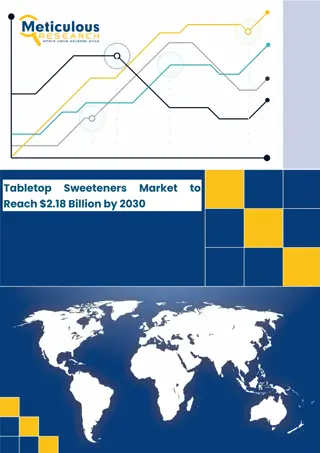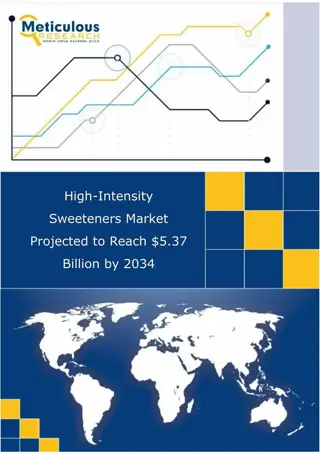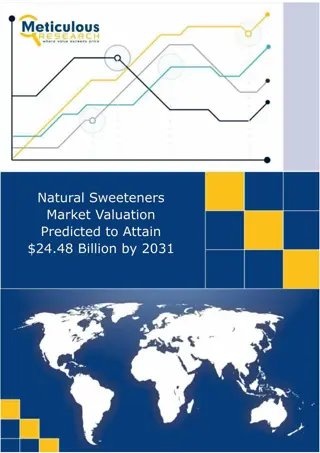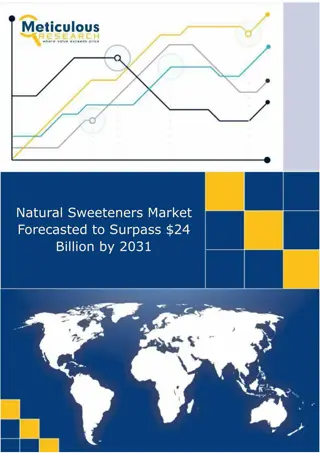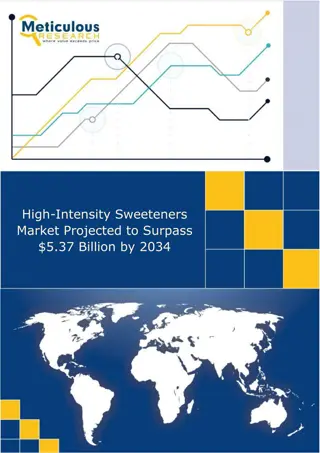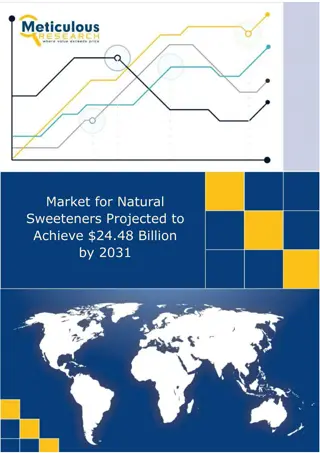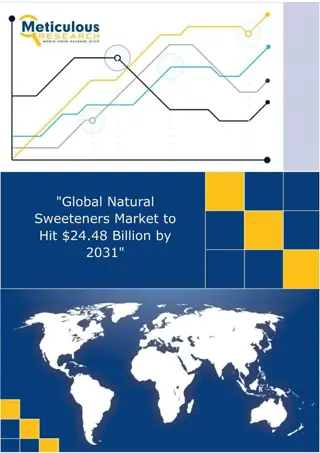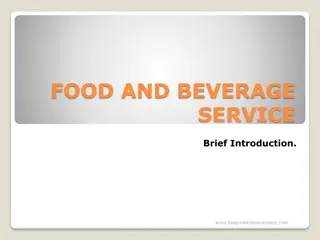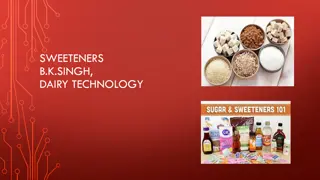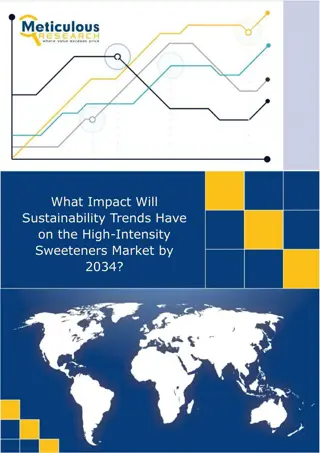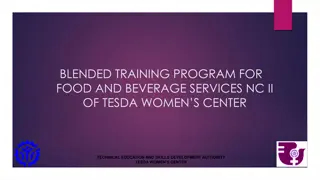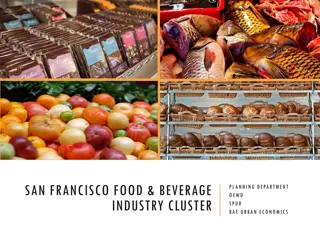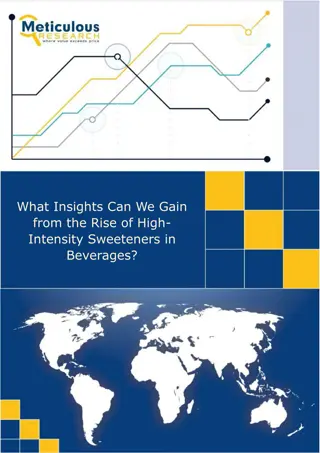
Emerging Applications of Polyol Sweeteners Beyond Traditional Food and Beverage
Polyol Sweeteners Market size is expected to be worth around USD 6.5 billion by 2033, from USD 3.6 Bn in 2023, growing at a CAGR of 6.1%n nDownload a sample report in MINUTES@//market.us/report/polyol-sweeteners-market/#requestSamplen
Download Presentation

Please find below an Image/Link to download the presentation.
The content on the website is provided AS IS for your information and personal use only. It may not be sold, licensed, or shared on other websites without obtaining consent from the author. Download presentation by click this link. If you encounter any issues during the download, it is possible that the publisher has removed the file from their server.
E N D
Presentation Transcript
Overview Polyol Sweeteners Market size is expected to be worth around USD 6.5 billion by 2033, from USD 3.6 Bn in 2023, growing at a CAGR of 6.1% during the forecast period from 2023 to 2033. The polyol sweeteners market encompasses the global industry dedicated to the production, distribution, and sale of polyol sweeteners, also known as sugar alcohols. These are low-calorie sweeteners used as sugar substitutes in various food and beverage products. Common types of polyol sweeteners include sorbitol, xylitol, erythritol, and mannitol, which are derived from starches or sugars through hydrogenation processes. Polyol sweeteners provide the sweetness of sugar without the associated high calories and glycemic impact, making them popular in sugar-free, low-calorie, and diabetic-friendly products. The market for polyol sweeteners is driven by the increasing consumer demand for healthier food and beverage options amid rising concerns about obesity, diabetes, and overall health. Food manufacturers are increasingly incorporating polyol sweeteners in a wide range of products, including confectioneries, baked goods, dairy products, and beverages, to cater to health-conscious consumers. Additionally, polyol sweeteners are favored for their functional benefits, such as providing bulk and texture to foods, improving
shelf life, and preventing dental cavities. As a result, the polyol sweeteners market is experiencing steady growth, supported by continuous product innovations and expanding applications in various sectors of the food industry. Key Market Segments By Product Sorbitol Xylitol Mannitol Maltitol Isomalt Other Products By Form Powder Liquid By Function Flavoring & Sweetening Agents Excipients Bulking Agents Humectants Other Functions By Application Food & Beverages Personal Care & Cosmetics Pharmaceuticals Other Applications
Download a sample report in MINUTES@https://market.us/report/polyol-sweeteners-market/#requestSample Sorbitol led the polyol sweeteners market with a 39.7% share, widely used as a sugar alternative in food and drinks due to its lower caloric content and dental health benefits, making it highly popular. In 2023, the powder/crystal form dominated the market with a 72.3% share, favored for its ease of use, storage, handling, and versatility across various industries such as food, beverages, pharmaceuticals, and personal care. Additionally, flavoring and sweetening agents secured around 52.6% of the market share in 2023, crucial in enhancing taste in products like candies, desserts, drinks, and some medications by providing sweetness without the high sugar content. Key Market Players Cargill Archer Daniels Midland Dupont Roquette Freres Tereos Starch & Sweeteners Sudzucker Ingredion Jungbunzlauer Suisse Gulshan Polyols Batory Foods B Food Science Dfi Sweeteners Plus Inc. Drivers: Polyol sweeteners are popular because they provide sweetness with fewer calories than sugar, addressing concerns about obesity and diabetes. This makes them a sought-after healthier alternative in food and beverages, driving steady market growth. Their usage extends beyond food, including in medicines, toothpaste, and industrial applications, appealing to health-conscious consumers seeking to reduce sugar intake in various aspects of their lives.
Restraints: Despite their benefits, polyol sweeteners face challenges such as higher costs compared to traditional sugars, which can limit their adoption in price-sensitive markets. Additionally, some individuals may experience digestive discomfort, like bloating or diarrhea, when consuming large amounts. The distinct taste profile and potential cooling effect may also not appeal to all consumers, impacting their acceptance. Opportunities: The polyol sweeteners market has significant growth potential due to expanding applications in industries like pharmaceuticals, personal care, and industrial products. As consumers increasingly seek healthier lifestyle choices, the demand for low-calorie, reduced-sugar alternatives rises. Technological advancements improving taste profiles and reducing aftertaste can further enhance consumer acceptance and broaden market adoption. Challenges: A key challenge for polyol sweeteners is their aftertaste, which some consumers find unappealing, making it difficult to match the taste of sugar. Additionally, the higher production costs compared to regular sugars pose a barrier to widespread use. Regulatory compliance across different regions adds complexity for manufacturers, and educating consumers about the benefits and safety of polyol sweeteners remains an ongoing challenge.




